The Central City 1899 Brick Depot in C&Sn3. A Bucket List Project.
1234




















1234
The Central City 1899 Brick Depot in C&Sn3. A Bucket List Project.
|
This post was updated on .
Okay gentlemen, you did it!
Dave's Central City maps thread, and all the great discussion and photos that Chris and Rick shared, has sucked my interest away from Breckenridge and renewed an old infatuation with the Central City yards and that beautiful 1899 brick depot. Like Keith, I've always wanted to build a model of the "new" Central depot, ever since I read Rick Steele's article back in the May, 1976, issue of the NG&SL Gazette. I still have Brian Adam's plans from that article in my files. But I was always intimidated by the complicated brick work and stone accents. Ken Martin's post about the 3-D printed model of the depot in HO scale re-inspired me. To make a long story short, I contacted Chuck Dollins by email and ended up buying the set of STL files for the model. Mr. Dollins was kind enough to put me in contact with a professional 3-D printer, who has agreed to help me with the project. He will be rescaling the HO files to 1:64 scale. His FDM printers have a build plate of about 13 inches square, so the enlarged parts should be able to be printed. I'm waiting on a cost estimate and, if it doesn't involve too many arms and legs, I will likely have a box of printed parts for the depot by the end of March. Assuming that I can assemble and finish the model, what will I do with the Central depot, other than mark it off my bucket list? I dunno. It certainly won't fit in at Breckenridge. Perhaps I'll build a diorama, say 18x30 inches, to photograph my models. Or perhaps a small shelf layout on one or two walls in my hobby room, inside the house. But before I get ahead of myself, I need to resolve some questions about the brick depot before printing begins: 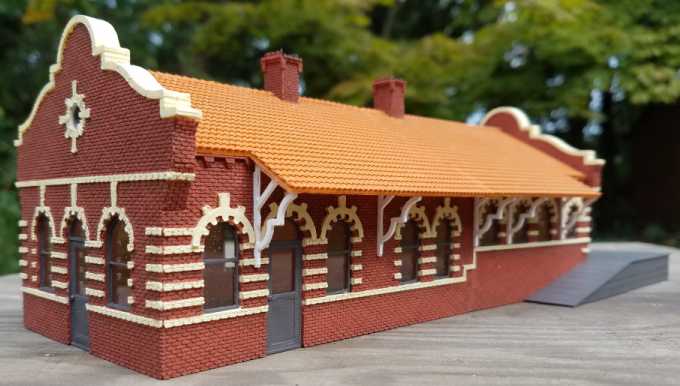 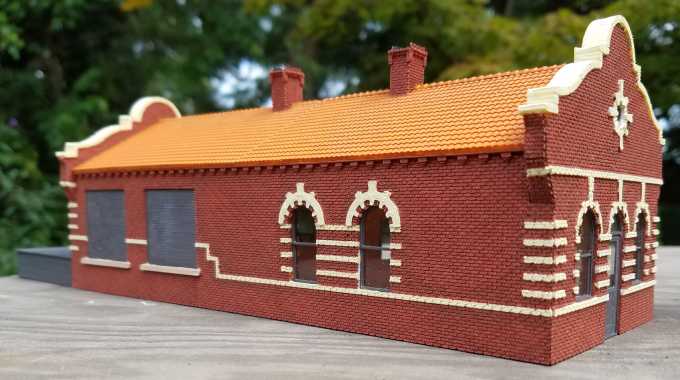 (HO model photos to key discussion of questions) 1. Roofing Material Mr. Dollins has designed the roof prints to represent terracotta Mediterranean style roofing tiles, to compliment the Italianate architecture of the building. I don't think this is correct. To me, the roof appears shingled, the shingles appear small, uniform and dark. I don't believe composite shingles had been invented in 1899. I'm wondering if they are slate shingles? Please opine! 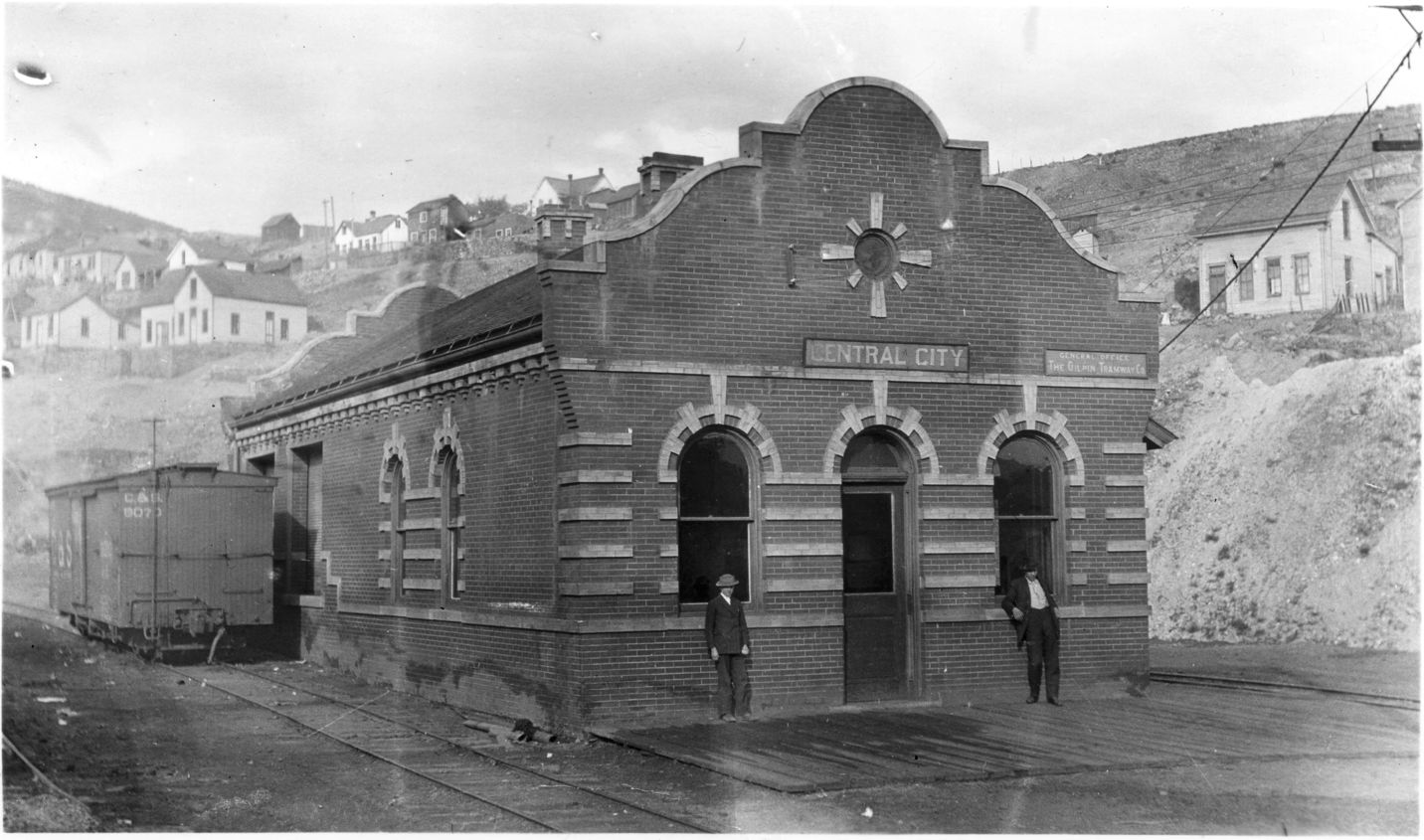 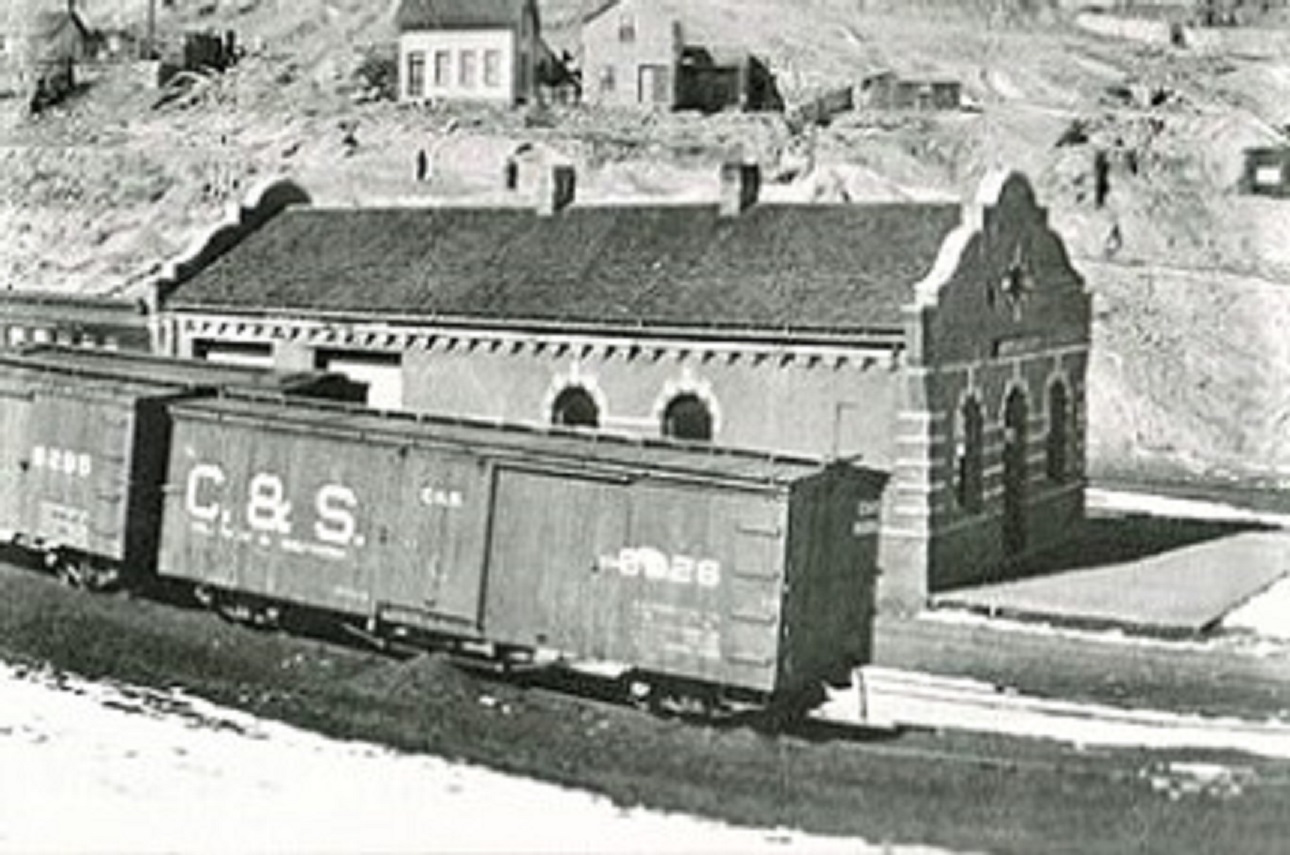 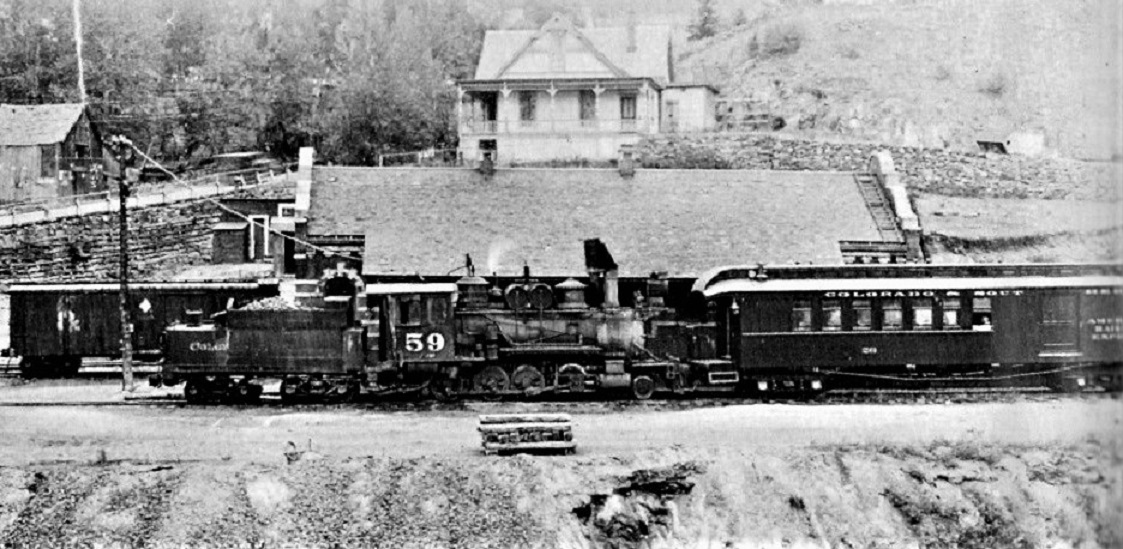 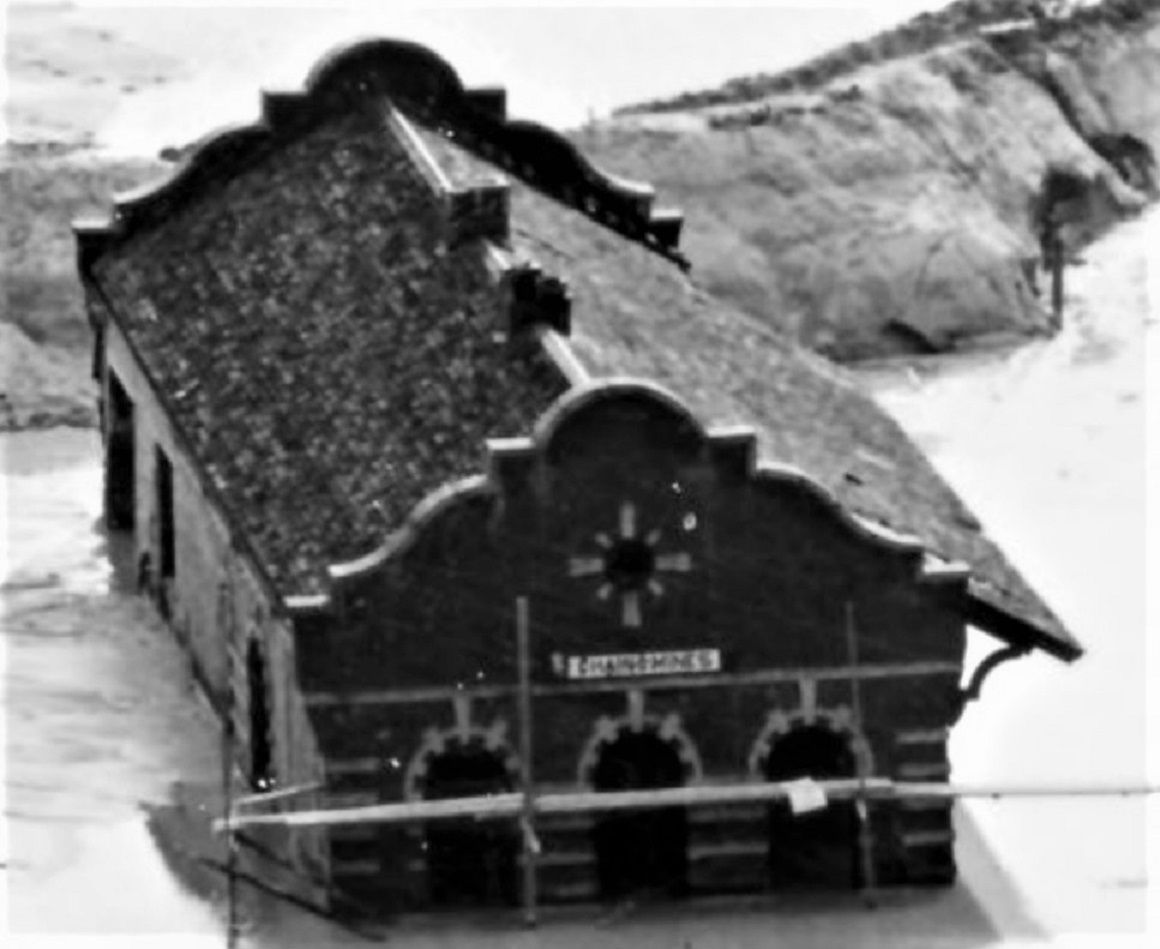 Rick Steel has said that he has a copy of the architect's blue prints of the building. Rick, do the blueprints specify the roofing material to be used? On the other hand, did clay or terracotta roofing tiles come in other colors, than the usual reddish beige? Keith, you're the architect among us, what say you? I'd hate to build a new roof and have to shingle it, if roofing tiles are truly a possibility. 2. "Hooper" Brick Rick says that most buildings in Central were built of this local brick. Anyone have some really good color photos of this brick. The only ones I've seen are of the Section House and are faded. I'm going to have to chose paint for the building, assuming that it is printed and built. And how about the blond brick trim, is that a local product as well?? 3. The Freight Doors The photos of the three freight doors suggest that they are a light metallic color. The Adams plans suggest that they are a corrugated metal. They appear to be roll up doors, as on a garage. I'm thinking that I'd paint them like galvanized metal. Rick, do the architect's plans detail the doors as to construction, material used and how they opened?? 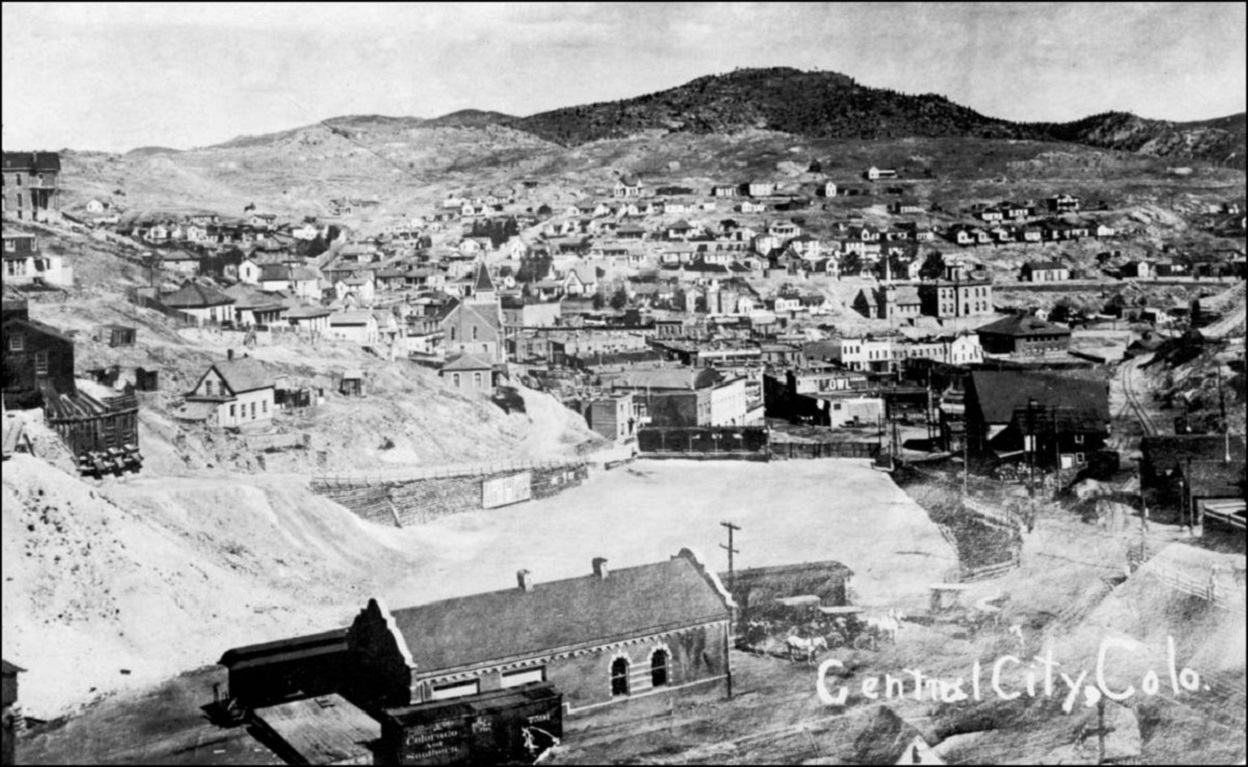 4. Door and Window Woodwork Colors My Dollins chose to print the door and window woodwork in a dark grey. All I've read suggests 1st decade C&S depot color were a solid "C&S red", with no accent colors on fascia, corner trim, doors, etc. The familiar dark green trim on red depots was a later CB&Q convention. The wood work in the first photo (above) doesn't contrast with the brick much, so it could be a dark red. But I'm thinking a dark green would look good with the brick. Photos of the Section House and Old Depot show dark window and door woodwork, inset in the brick building. Does anyone know the colors of the Section House wood work that survived?? As always, your thoughts and advice will be greatly appreciated.
Jim Courtney
Poulsbo, WA |
Re: Central City 1899 Brick Depot Questions
|
Jim,
the Depot plans are in the Gilpin Railroad Era, by Sundance: Callouts for the doors are "Iron Rolling Door" in 5" (L) iron, at all three freight locations, and Shingles are called out for the roofing, over 1" boards(sarking; up there?). That roof structure was too light to hold up terracotta Tiles, me thinks. Good luck. Take over the spare bedroom if you have to, threaten to punch through to the lounge....  you only have one life. you only have one life. 
UpSideDownC
in New Zealand |
Re: Central City 1899 Brick Depot Questions
|
Definitely wood shingles on the roof. Slates would be more uniform in colour and would lay flatter. (And as Chris says, would require a more robust roof structure.)
|
Re: Central City 1899 Brick Depot Questions
|
This post was updated on .
In reply to this post by Jim Courtney
Jim, should I say congratulations or apologize for sparking this diversion from your grand plans?
 As for colors, for what it's worth, one thing I note in the earlier photos, the pre-scale house era before ca 1905, is that the doors and window framing appears darker than their surrounding trim. Note the small circular window in the attic seems to not follow this arrangement--optical illusion? Roof supports on this side may be the same as this trim color to my eye. And definitely wood shingles. DPL x-11572 is one example. 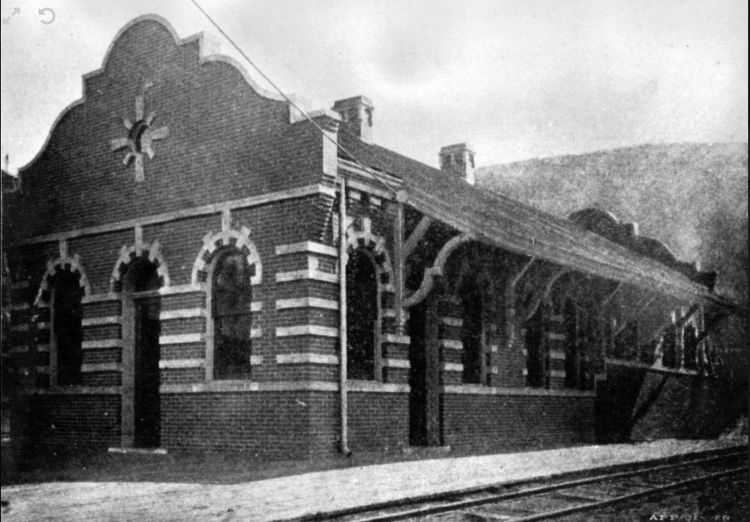 Later photos, such as the first you shared in this thread, hint at a single color for windows, doors and trim. 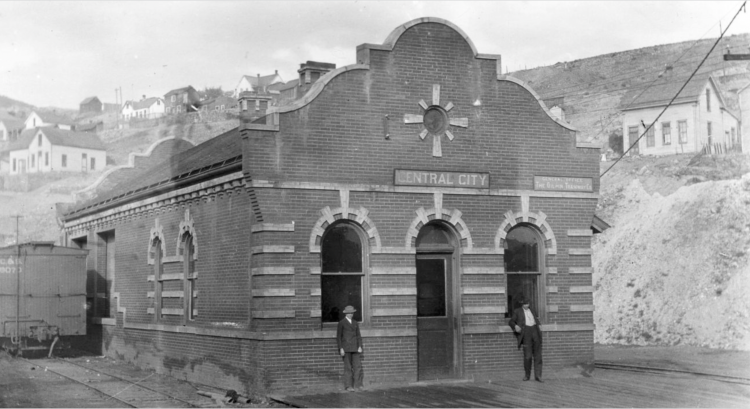 In earlier photos the freight doors in the pre-scale house period appear quite light, as you note. But in the image above they could be interpreted as almost the same value as the windows. That doesn't tell us a color...but it could hint that they could be, by this time, the same.
Dave Eggleston
Seattle, WA |
Re: Central City 1899 Brick Depot Questions
|
This post was updated on .
Oh, geez, I just realized another detail of the station after my last post. The earliest photos, like DPL x-11572, do not have the Gilpin Tram office sign on them. Looking at other photos, as expected a sign begins to appear, and even in photos before the scale house is built--which pushes the possible construction date of the scale house to at least ca late 1906 or 1907.
Unless that sign, in the early years, wasn't lettered for the Gilpin offices...I can't read the lettering in the photo reproduction. Here's the early yard photo Rick shared in the other thread--no scale house, mine nearby, early lettering on the cars--and the sign is there. And maybe happily now we can better date this photo... 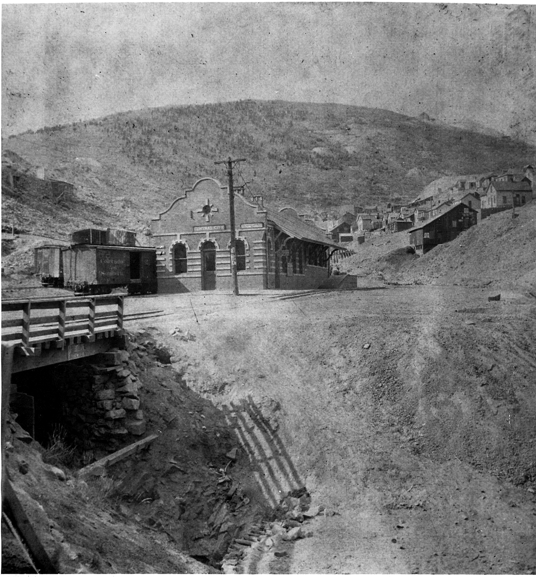 So Jim, if you chose to model 1902, no sign.
Dave Eggleston
Seattle, WA |
Re: Central City 1899 Brick Depot Questions
|
Details, details......
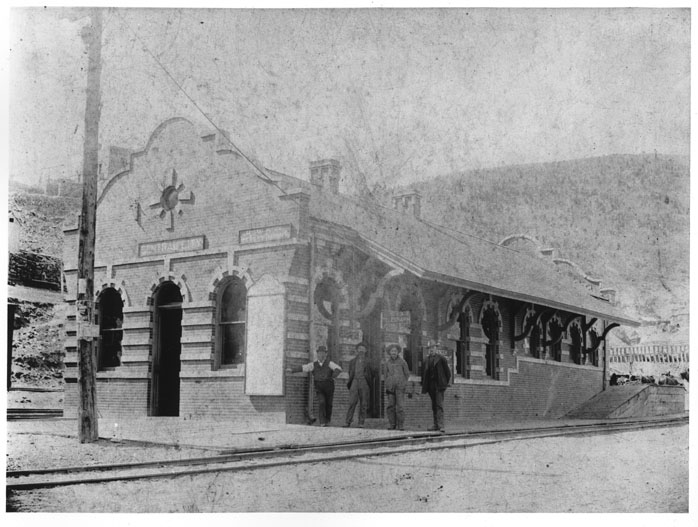
UpSideDownC
in New Zealand |
Re: Central City 1899 Brick Depot Questions
|
In reply to this post by Dave Eggleston
Hey Dave,
As to the last photo you posted, the boxcar to left still has link-pin couplers, so I would date the photo to 1900-1903. I don't recall when the C&S acquired corporate control of the Gilpin Tram, but Rick's photo suggests that they had moved their office into the Central brick depot by 1903. I can't imagine any other sign that might be in that location. As to the two signs on the end, the Adams' plans in Rick Steel's Gazette article has excellent renditions, that I can scale down, print and use: 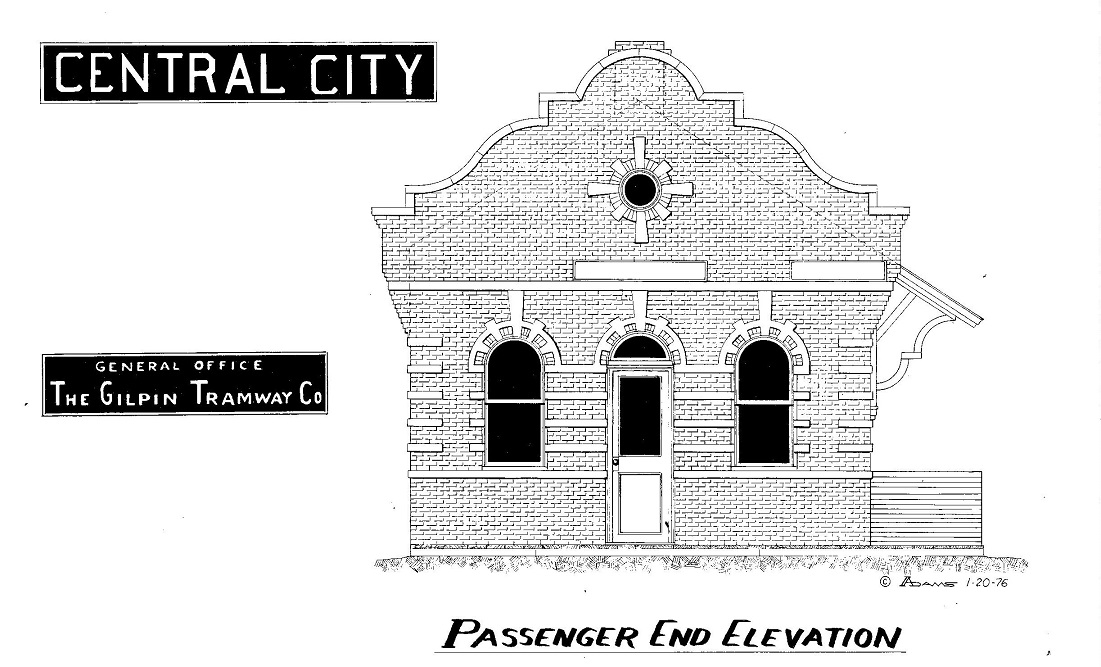 But now Chris is finding more signs for me to fabricate: 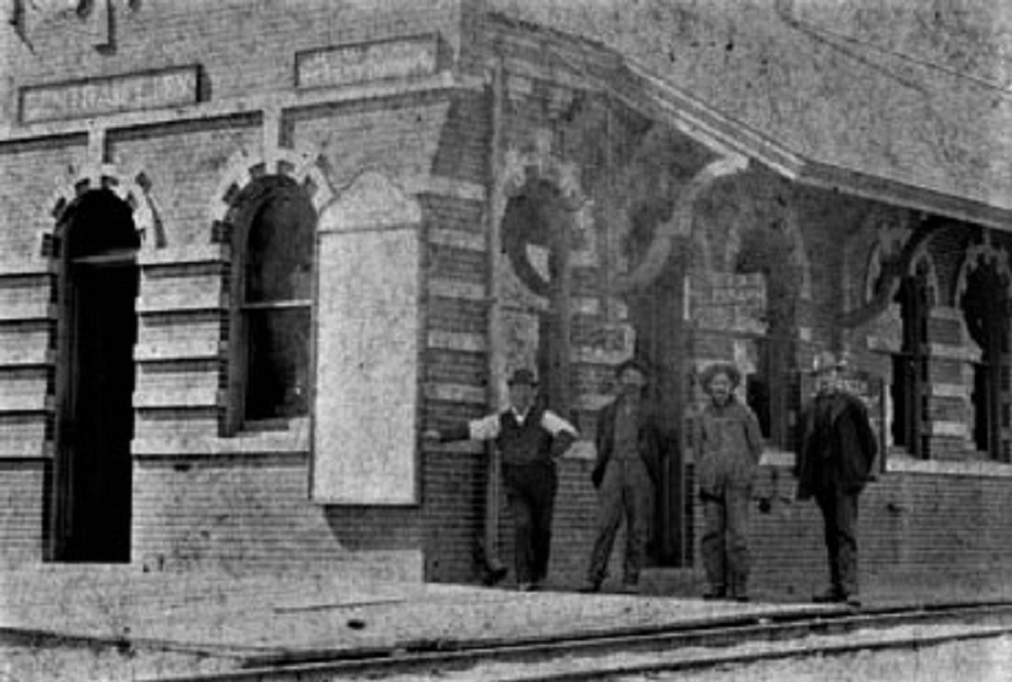 I count a total of 5 in this view. Besides the two signs above door and window, there is that giant notice board on the corner. It reminds me of the sign at the entrance to the little Baptist church I attended as a young lad growing up in Keller, TX. Wonder what notices are posted. And then under the eave where the four men stand are two more signs. Above the head of the 2nd man from the right is a small sign jutting out, that first looked like a "Western Union" sign--but I think that it may read "C&S Telegraph". And just behind the man at the far right is a framed "Bulletin" sign, similar to the one at Silver Plume, that list train arrival and departure signs. 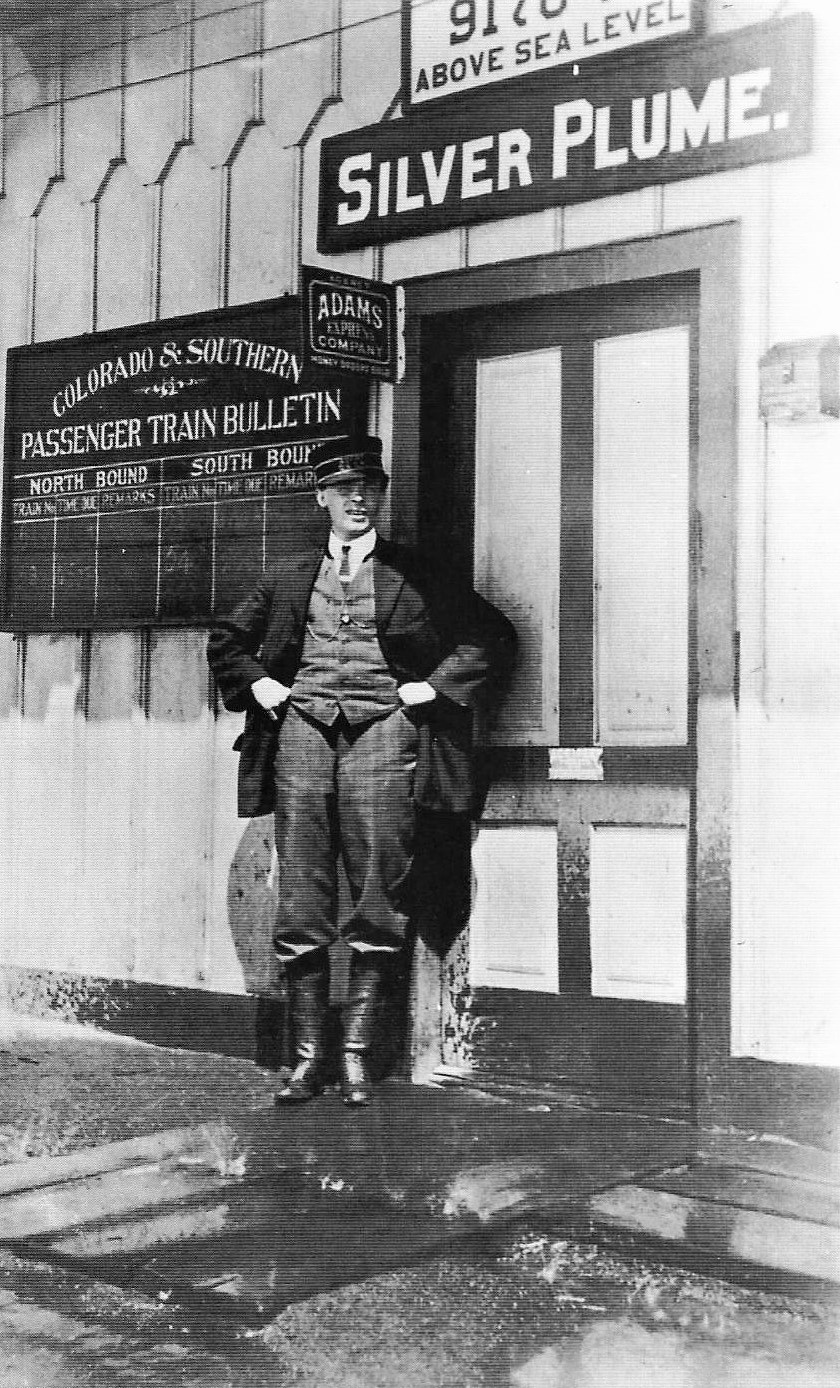 Anyone notice an "Adams Express" sign anywhere on the Central City depot?? Details, details is right! 
BTW, the STL files and parts inventory have been emailed to the printer today, I'm now waiting a price quote for his services. There will be a total of 61 individual printed parts (including some spare window and doors) to build the little brick depot.
Jim Courtney
Poulsbo, WA |
Re: Central City 1899 Brick Depot Questions
|
This post was updated on .
Jim, thanks for that info.
The Gilpin was officially acquired, I believe, around June 1906. [edit: actually 1904 as corrected by Chris in the next post] On the link and pins...fantastic eyes! Ok, I know other railroads I research dragged their heels on conversions from link & pin and lingered past 1903 when they could get away with it. I mean really dragged their heels. Is 1903 a hard, known stop for the coupler conversion on the C&S? Only asking because that date is a valuable addition to the list of things I've been using to date photos, one that I'd omitted. As to Adams signs, not yet. The old little brick depot had lots of signs on it but dunno about the new station. Look at how they painted that Silver Plume door. So much for standards...?
Dave Eggleston
Seattle, WA |
Re: Central City 1899 Brick Depot Questions
|
In reply to this post by Jim Courtney
A couple of snippets for your perusal Jim, The Gilpin Observer, Volume 13, Number 3, April 27, 1899 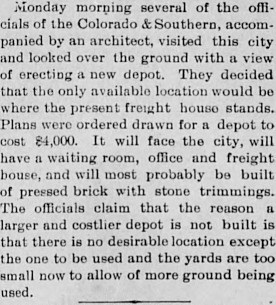 The Gilpin Observer June 22, 1899 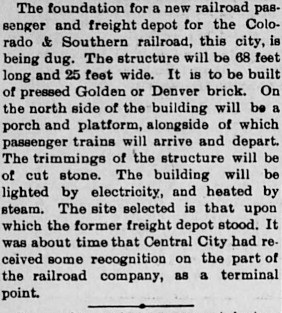
UpSideDownC
in New Zealand |
Re: Central City 1899 Brick Depot Questions
|
Gilpin was acquired (Gilpin Railroad Era) 20th July 1904 fwiw.
The Gilpin Observer, Volume 18, Number 17, July 28, 1904 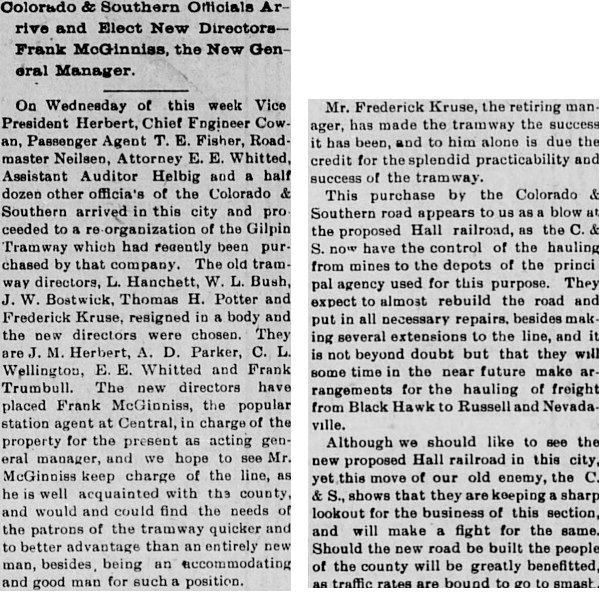
UpSideDownC
in New Zealand |
Re: Central City 1899 Brick Depot Questions
|
Until Chris mentioned it, I had forgotten that I owned a copy of the Abbott / McCoy Gilpin book. Found it on my bookshelf, unopened for years. While looking for the architect's plans of the depot, that Chris referenced (they're in the very back of the book), I stumbled upon this photo that answers many of my questions:
 This settles the roofing question, the shingles are obvious, and the patches of missing shingles over the freight house exposes the one-bys that Chris cited. As to bricks, note that the chimneys have a couple of courses of blonde brick, as well as the decorative dentils, also made of blond brick. The photo can be dated to 1910 to 1916. The SUF boxcar 8353 was delivered in 1910, while none of the cars have USSA hardware, mandated by 1916. St Charles boxcar 8038 has been repainted and lettered in the block monogram, suggesting no earlier than 1911-1912. Note the hazard placard on the door of boxcar 8295--are they unloading explosives or drums of gasoline at the freight house platform? Don't overlook what's happening at the right frame: A locomotive is on the main line by the brick section house, likely having just spotted a boxcar on the siding (there is a brakeman atop the car setting a hand brake). And catch the shape of the large coal bin's end--the top of the bin leans toward the siding at trackside. ______________________ The architect's drawings answer more questions about the freight doors. I had imagined the doors as a flexible corrugated metal, that when raised on a rail lay horizontal, as on my modern garage door. But the plans cite that the doors consisted of "iron slats" that rolled up around a small diameter drum. Makes me think of those skinny Venetian blinds, always in the "closed" position, raised and lowered "closed". So the surface of the outside of the door wouldn't be "corrugated", rather it would look like "shiplap" with a very narrow reveal and a tiny overhang. As the freight doors were made of iron slats, I begin to think that they were probably painted to prevent rust, and reconsidered painting them to resemble galvanized metal. But the plans also indicate that the gutters and downspouts were fabricated from "galvanized iron". I didn't know that iron could be galvanized . . .
Jim Courtney
Poulsbo, WA |
Re: Central City 1899 Brick Depot Questions
|
This post was updated on .
Jim,
galvanised iron is thin gauge sheet metal that was either flat or corrugated. And same goes for corrugated metal(as you call it) has always been known as corrugated iron down here, fwiw Are you able to tell me why up there you call sheet metal with corrugations as it is, but call corrugated road surfaces as washboard?  p.s. You haven't yet remarked on the Chimneys being rectangular with an extra corbel in the middle vs the square in the initial post model. 
UpSideDownC
in New Zealand |
Re: Central City 1899 Brick Depot Questions
|
This post was updated on .
Washboard is a common American idiomatic adjective--when I was twenty-one I had washboard abs!
 And thanks so much, Chris -- now I'll never un-notice that the printed chimneys are not correct. Looking at the parts files, I think that the sides with notched bottoms are one brick wider than the sides with flat bottoms, so not exactly square. Maybe I can add that missing corbel. 
Jim Courtney
Poulsbo, WA |
Re: Central City 1899 Brick Depot Questions
|
In reply to this post by Jim Courtney
Jim, I just noticed the end freight door, and maybe the side door closest to it are open in that photo. It may seem daunting but wow it would be so cool to see a model with the doors open like that and thoughtfully arranged lcl inside, especially in a slightly larger scale such as S.
I think I can also see through the rightmost window to the window on the opposite building end, the end with the station signs, indicating where a wall isn't on the inside. If you decide to detail the office area.
Dave Eggleston
Seattle, WA |
Re: Central City 1899 Brick Depot Questions
|
Hey Dave,
Yep, I noticed the open freight doors and had the same thought. If I'm going to pursue this bucket list diversion from Breckenridge, might as well go whole hog! Addition of the two interior walls would help avoid any bowing in of the two side walls on the assembled model. I could cover the interior walls of the freight room with embossed brick paper and add an elevated floor the same height as the rear platform. The architects plans for the brick depot in The Gilpin Era book (pages 358 & 359) are helpful as well: 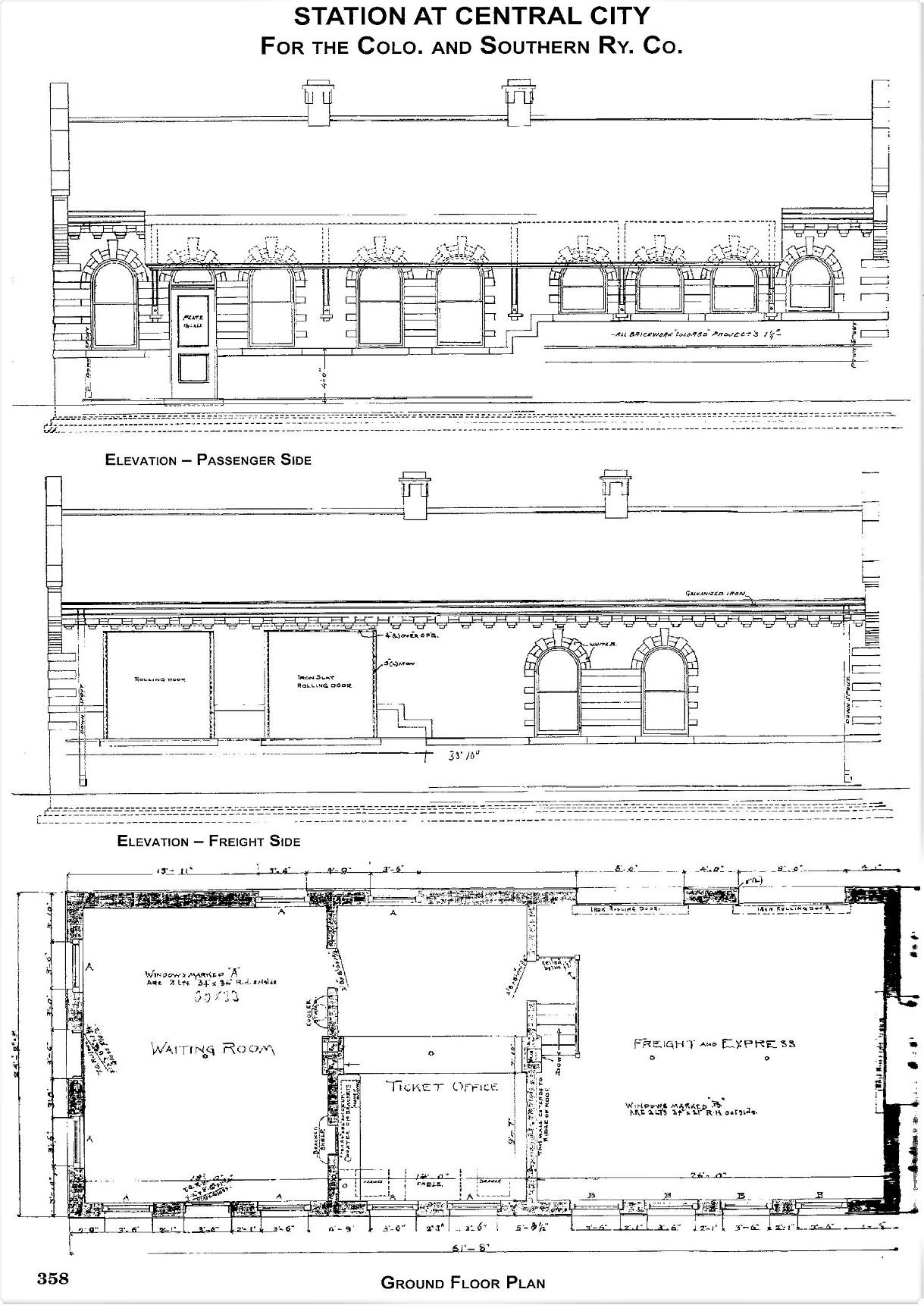 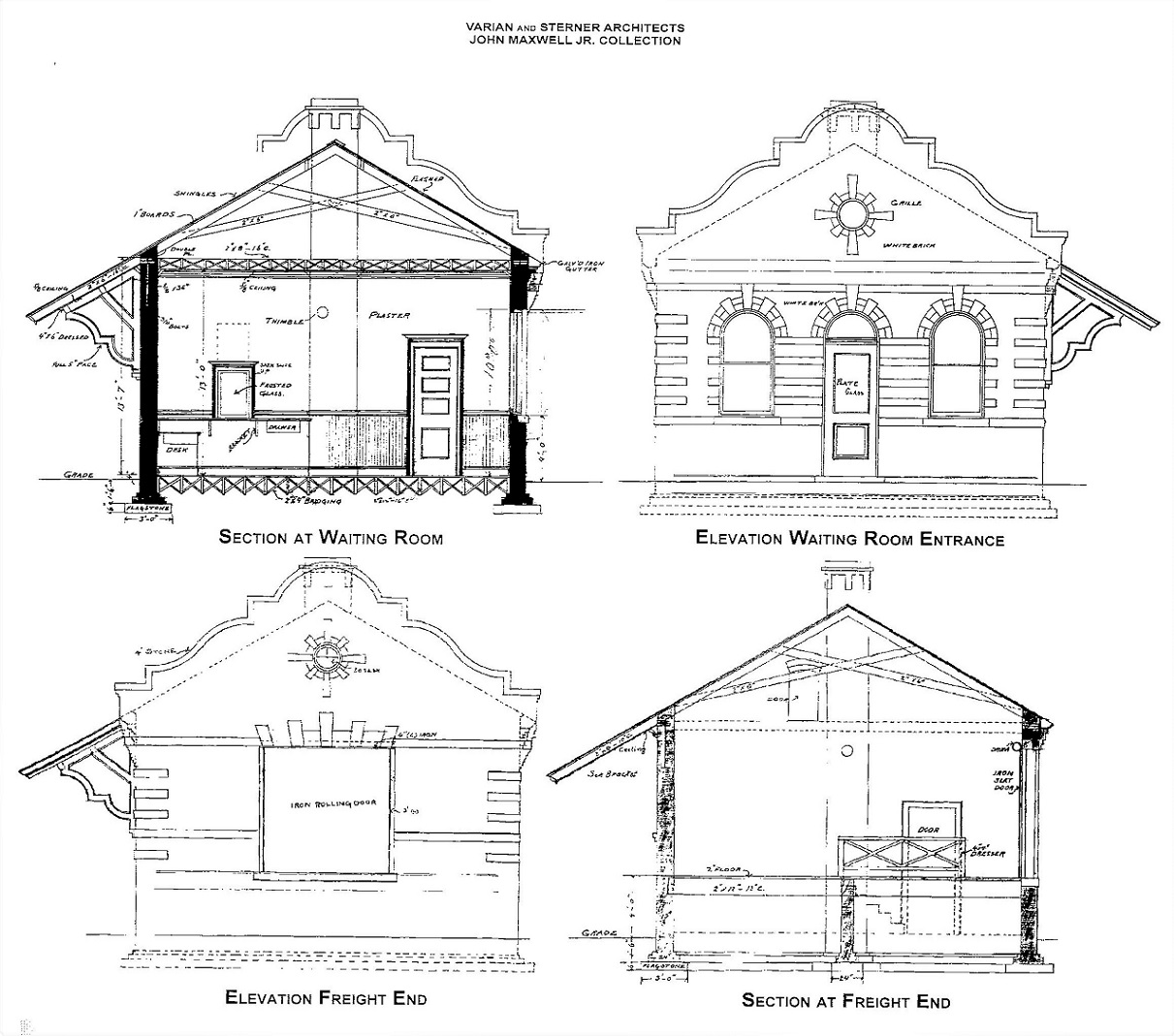 The interior wall separating the waiting room from the ticket office is right where you suggested. Further, the interior wall as in the waiting room/ticket office were plastered, painted and had wood wainscoting. Interior lighting would be in order, as well as benches and patiently waiting figures . . . and not to forget a few brass spittoons (I actually have some in S scale). ____________________________ As to your comments of dating photos per type of coupler on rolling stock, we had a long discussion in a thread a few years back. I can't seem to find it. My recollection is that Congress passed the first Safety Appliance Act (automatic couplers and air brakes) about 1893, with mandated compliance by the end of 1898. The railroads were violently opposed, massive litigation ensued, federal enforcement was deferred until the issue was settled by the courts (the Supreme Court ultimately ruled against the railroads). Congress further doubled down by amending the act in 1900 or 1901, adding new requirements but extending the grace period until the end of 1903. Please correct me if I've made misstatements. So, yes, the drop dead date for removal of link/pin couplers was the end of 1903. Did that really happen on the C&S narrow gauge?? Probably not. The receiver and president of the new C&S wasn't very proactive with compliance. All of the St Charles freight cars delivered in 1897 and the end of 1898 arrived with some type of link/pin couplers. Even the 1900 stock cars, per the builder's photograph from St. Charles/AC&F, were delivered with link/pin couplers. And as the 1903 dead line for conversion approached, I suspect the C&S car shops were focused like a laser at bringing the standard gauge car fleet into compliance--those cars had to be capable of interchange and had to be coupler compatible with other roads. So my guess is that the narrow gauge cars were converted between 1901 and 1903 received Janney couplers with slotted knuckles, allowing coupling to link and pin cars. The the last narrow gauge cars to lose the link/pins may not have been converted until 1905-1906. So it is quite possible that Rick's photo of the depot with the Gilpin sign and boxcar with link/pin coupler was taken in the second half of 1904, given the date of acquisition of the Gilpin that Chris posted By the way, the Gilpin sign was likely a formality. Per Chris's news articles, the man chosen as the General Manager of the reorganized Gilpin Tram was the Central City station agent, still employed by the C&S. He likely sat at the same desk in the brick depot's ticket office and merely wore two hats . . .
Jim Courtney
Poulsbo, WA |
Re: Central City 1899 Brick Depot Questions
|
In reply to this post by Chris Walker
Jim, the Iron doors are very much like the rolling security doors you see in Europe at storefronts and on the east coast. easily simulated with corrugated metal.
A very interesting thread.
Keith Hayes
Leadville in Sn3 |
Re: Central City 1899 Brick Depot Questions
|
In reply to this post by Jim Courtney
Hi Guys,
I just stumbled into this thread. The original Varian & Sterner plans were done in 1/4" scale. There are a total of eight sheets and not one lists a date. As fas as the valuation goes, there are a series of "Worksheets" (Just notes like the foundation & Back fill, the walls were 13" brick on the outside walls. Most of it can be read... the roof just indicates "Shingles" Let me fire up the scanner and I'll see how this stuff comes out for you. Rick |
Re: Central City 1899 Brick Depot Questions
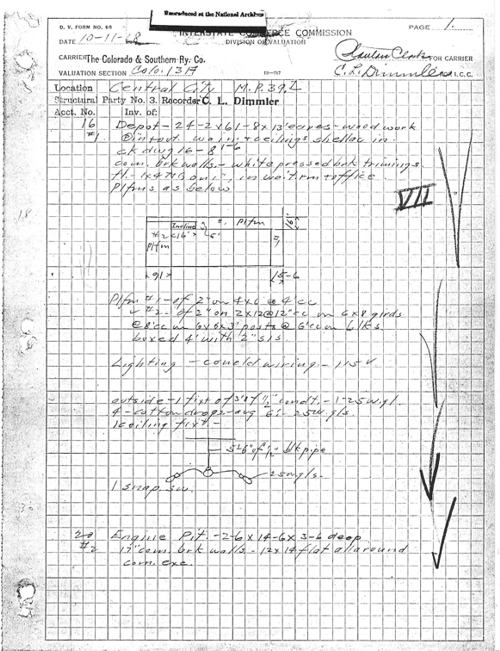
|
Re: Central City 1899 Brick Depot Questions
|
In reply to this post by Rick Steele
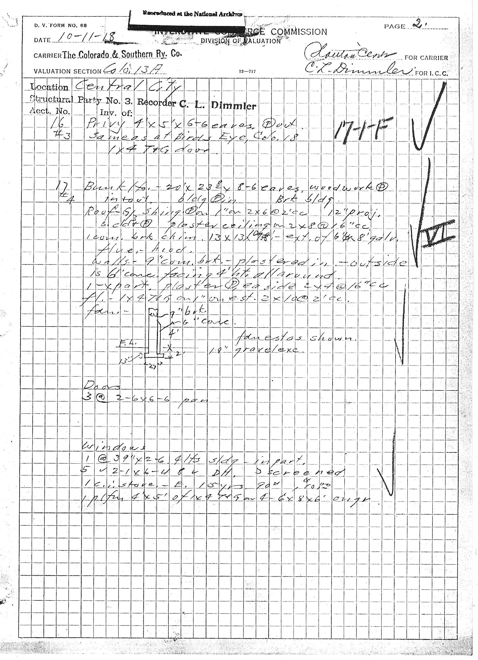
|
Re: Central City 1899 Brick Depot Questions
|
In reply to this post by Rick Steele
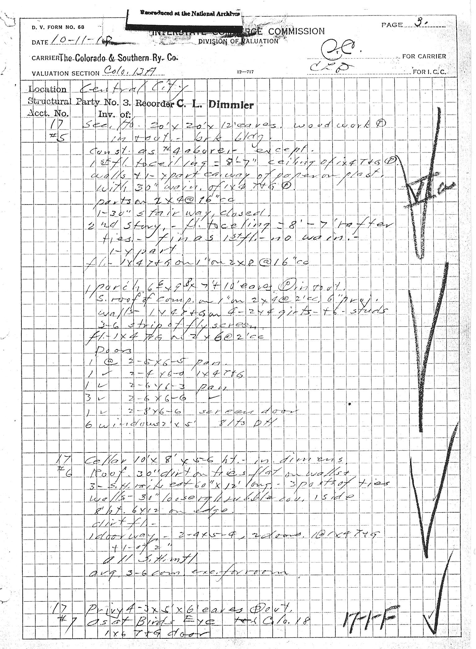
|
«
Return to C&Sng Discussion Forum
|
1 view|%1 views
| Free forum by Nabble | Edit this page |

